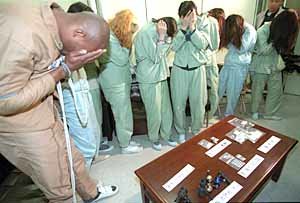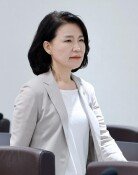Illegal drug use on the rise
Illegal drug use on the rise
Posted December. 18, 2000 14:50,

Use of a drug with the street name of ¡®White Thrill¡¯ has seen an explosive increase.
The number of cases of illegal drug use that had been more or less considered controllable through crackdowns and medical treatments of drug users and dealers, has now become uncontrollable.
The number of cases rose within a single decade from 743 cases in 1980 to 4,222 in 1990. The rapid increase in cases continued through the past decade with more than 10,000 cases reported last year, a 14-fold increase in 19 years.
As of October, 8,738 cases have been recorded this year. The Prosecutor¡¯s Office estimates the number to be between 10,000 to 15,000 cases. The increase in the number of cases reflects the estimated 200,000 drug abusers in Korea, one out of every 230 people.
The increase in the number of cases is not necessarily the main cause of worry. The real worry lies in the increase in the drug proliferation rating, which reflects the number of known cases for every 100,000 persons, from 20 to 23.
In developed nations when the rating rises above 20, the rate of proliferation increases and control of the substance and use through legal punishments and treatment is next to impossible. Also, a fundamental transformation takes place in the social backgrounds of the users, the types of drugs and the level of organization of the syndicates.
A marked change has occurred in the expanded social backgrounds of users. In the 1970s and 1980s, most of the users were celebrities and members the entertainment industry. In the 1990s, drug use expanded to office workers, housewives and medical professionals.
Recently, the head priest of the Baekdam Buddhist temple was arrested for possession and use of marijuana.
In contrast to the hiro-pong, a methamphetamine, and marijuana, which were past drugs of choice, there has been a wider availability of new, unknown drugs. The Chinese penpluramin that first surfaced two years ago seems to have found a niche. This year 256,752 tablets have been confiscated. Last year, the drug ecstasy became the drug of choice for university students and other highly educated users. This year 8,728 ecstasy pills have been confiscated, an explosive proliferation.
The transformation of drug syndicates also is of note. The organized crime syndicates, which had steered clear of drug trafficking, are taking interest. In May 1999, two members of the "Daeshin" crime syndicate in Taegu were arrested for possession and attempted sale of 9 kg of hiro-pong. There has been about 10 organized crime syndicates found dealing in drugs this year.
The suppliers of illegal drugs also are increasing rapidly. The drugs are trafficked from China, Thailand, Philippines and as far away as Europe and the U.S. This year alone, 159 people have been arrested for drug trafficking, a 78 percent increase from last year.



![[속보]尹 석방 124일 만에 재구속…법원 “증거인멸 염려”](https://dimg.donga.com/c/138/175/90/1/wps/NEWS/IMAGE/2025/07/10/131973390.1.jpg)



